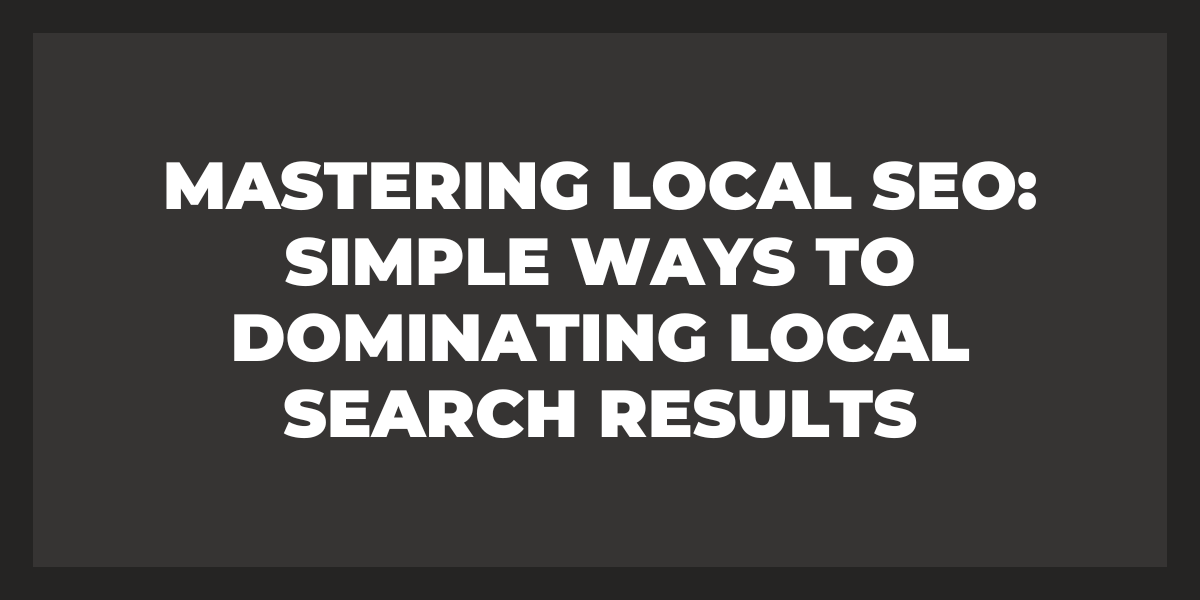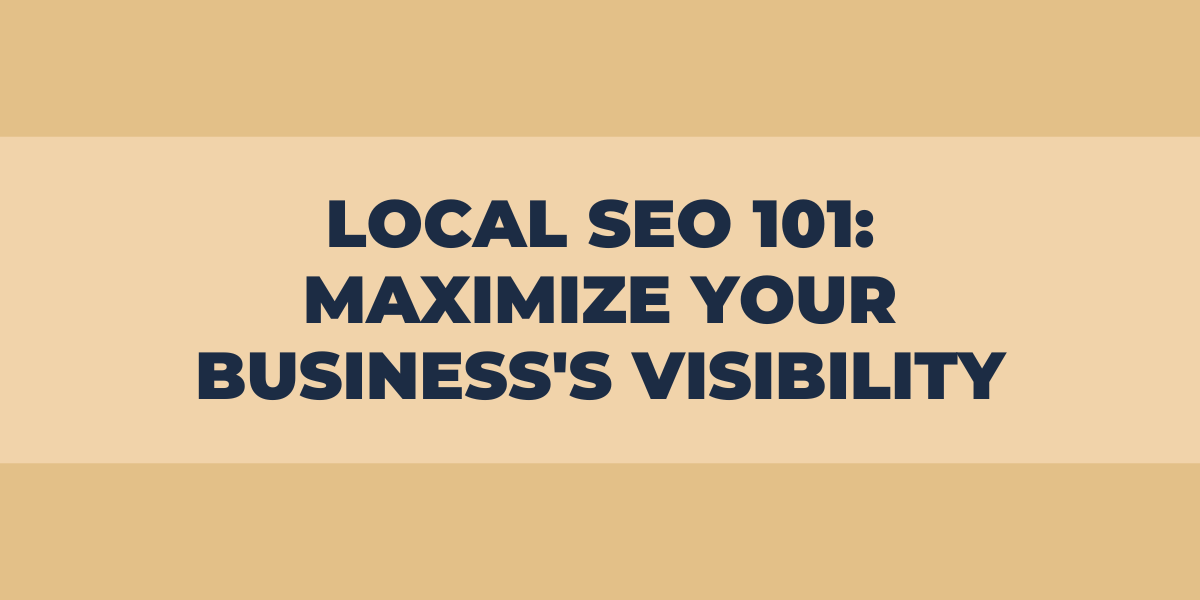If you want your business to be found by people in your area, you need to do some keyword mapping for local SEO.
Keyword mapping is the process of finding and targeting the right keywords for your business. It involves researching what words and phrases people are likely to use when they’re looking for a business like yours.
Once you know which keywords to target, you can optimize your website and the content around them so that you show up higher in search engine results pages (SERPs).
What Is Keyword Mapping?
A keyword map is a table that associates keywords (or key phrases) with the pages on your website where they are used. When you create a new page, you add the keywords for that page to the map. When someone searches Google for one of your keywords, Google looks at your website and tries to find the best match for the user’s query.
The benefit of using a keyword map is that it helps you focus your page content on the topics that people are searching for. It also helps you identify potential opportunities for new keywords to target.
There are a few things to keep in mind when creating a keyword map:
1. Choose keywords that are relevant to your topic.
2. Use keywords sparingly. Overuse can result in lower rankings.
3. Make sure your keywords appear in the title, in the body of the text, and in the tags.
4. Check to see if your keywords are already being used by your competitors. If they are, you may want to choose different keywords to target.
How to Do Keyword Mapping
There are many ways to do keyword mapping, but the most effective way is to first identify your target audience and then find keywords that are most relevant to them. You can use various online tools to help you find these keywords, such as Google AdWords Keyword Planner and semrush.com. Once you have your list of keywords, you can begin to map them to specific pages on your website.
One way to do this is by using a tool called Yoast SEO. Yoast SEO is a WordPress plugin that helps you optimize your website for search engines. It has a feature called “SEO Title” and “SEO Description” which allow you to input your target keywords for each page. You can also use the “Content Analysis” feature to see how well your page is optimized for those keywords.
Another way to do keyword mapping is by using a tool called Google Search Console. Google Search Console is a free tool offered by Google that helps you track your website’s search engine performance. It has a feature called “Search Traffic” which shows you which keywords are bringing traffic to your website. You can then use this information to target those keywords on specific pages of your website.
Build a list of your target keywords
Keyword mapping is the process of finding related keywords for a given topic. This can be done through brainstorming, using a thesaurus, or any other number of methods. The goal is to find a variety of keywords that will help you target your audience more accurately.
To build a list of target keywords, you’ll first need to come up with a list of keywords related to your topic. Brainstorming is a great way to do this. List as many keywords as you can think of and then group them together by similarity. Once you have a good list, it’s time to start narrowing it down.
The next step is to determine which keywords are the most relevant to your topic. You can do this by looking at the competition for those keywords and how often they’re searched. The higher the competition and the more often a keyword is searched, the more relevant it is likely to be.
Once you’ve determined which keywords are most relevant, it’s time to start incorporating them into your content. You can do this by using them in your titles, subtitles, and body copy. You can also use them in your tags and metadata. Doing this will help you improve your ranking in search engine results pages (SERPs) and help you reach your target audience more effectively.
Group keywords by topic
To start, you will want to gather all of your keywords together. You can do this by topic or by any other method that makes sense to you. Once you have your keywords grouped together, you will then want to create a mapping document. This document will outline how each keyword group relates to one other. You can use any type of diagram to create your mapping document, but I recommend using a tree diagram.
The next step is to begin creating your content. Start with your main topic and work your way down the tree diagram, creating content for each keyword group. Be sure to use your keywords throughout your content in a natural way. This will help improve your SEO ranking and allow your readers to easily find the information they are looking for.
Check the search intent on SERPs
When it comes to doing keyword mapping, one of the most important things you need to do is check the search intent on SERPs. This will help you to understand what users are looking for when they type in those keywords, and it will help you to choose the right ones for your campaign.
There are a few different ways to check the search intent on SERPs. One is to look at the types of results that are returned. If the majority of the results are informational, then it’s likely that people are looking for information about that topic. If the majority of the results are commercial, then it’s likely that people are looking to buy something related to that topic.
Another way to check the search intent is by looking at the ads that are displayed. If most of the ads are for products or services, then it’s likely that the search intent is commercial. If most of the ads are for informational content, then it’s likely that the search intent is informational.
By checking the search intent on SERPs, you can make sure that you’re targeting the right keywords and getting more traffic from those keywords.
Sort keyword groups by difficulty
There are a few ways to do keyword mapping. The first way is to sort the groups by keyword difficulty. The easiest keywords are at the top, and the most difficult keywords are at the bottom.
The second way to do the keyword mapping process is to group the keywords by topic. This way, you can see how all of the keywords related to each other.
The third way to do keyword mapping is to group the keywords by type. This way, you can see how all of the keywords related to each other.
Import your keywords
Importing your keywords into your marketing software is a simple process that can be completed in a few minutes. The first step is to find the file where your keywords are stored. If you have a list of keywords saved as a text file, you can upload this file directly into your marketing software. If you have a list of assigning keywords saved in a different format, you may need to convert the file to a text format before uploading.
The next step is to determine the format of your keyword maps file. Most marketing software will require that your keywords be organized in a specific way. For example, some software may require that you list your keywords in one column, while others may require that you list them in a table with two columns. Once you have determined the format of your keywords file, you can begin importing your keywords into your marketing software.
The final step is to map your keywords to the appropriate fields in your software. This process will vary depending on the software that you are using. Typically, you will need to specify which column in your keyword list corresponds to the title of your campaign, the target country, the language of your campaign, and other relevant information. Once you have mapped your keywords to the appropriate fields, your marketing software will be ready to use!
Map keywords to pages
One way to do keyword mapping is to first come up with a list of keywords that you want to target. You can think of these keywords as the topics you want your website to be found for. Once you have your list of keywords, you’ll need to map each keyword cannibalization to a specific page on your website.
To do this, you’ll need to create a spreadsheet or table where you can track which keywords are mapped to which pages. In your spreadsheet, you’ll want to include the following information:
-Keyword
-Page URL
-Page Title
-Meta Description
Once you have your spreadsheet set up, it’s time to start mapping keywords to pages. Start by putting the keyword in the “Keyword” column and then put the corresponding page URL in the “Page URL” column. Then, in the “Page Title” column, put the title of the page that you want that keyword to rank for. Finally, in the “Meta Description” column, put the meta description that you want for that page.
Keep in mind that not all of your keywords will fit perfectly on one page. In some cases, you may have to create a new page specifically for a particular keyword. If this is the case, make sure to include the keyword in the “Page URL” column and also create a meta description for that page.
By using a keyword mapping document, you can make sure that your website is targeting the right keywords and that those keywords are being used on the correct pages. This will help improve your website’s SEO and help you rank higher in search engine results pages.
Optimize your pages for the mapped keywords
There are a few important things to keep in mind when performing keyword mapping:
1. Use the right keywords. Make sure you are targeting the right keywords for your page. Make sure they are relevant to your topic and make sure they are being used in the right places on your page.
2. Use the keywords in the right way. Don’t just stuff your pages with keywords in an attempt to rank higher. Use them in a way that is both relevant and interesting to your readers.
3. Research your keywords. Make sure you have a good understanding of what each keyword means and make sure you are targeting the right audience with each one.
4. Use keyword research tools. There are a number of different tools available that can help you research and target the right keywords for your site.
5. Monitor your results. Keep track of how your pages are ranking for each keyword, and make changes as needed to improve your results.
How to Do Keyword Mapping Video Transcript
When doing keyword mapping for a video transcript, it is important to first come up with a list of keywords that describe the content of the video. You can then use these keywords to help you determine the most important points in the video and create a summary of the video’s content.
To start, use a keyword research tool and come up with a list of keywords that describe the content of the video. These could be terms that are mentioned in the video, topics that are covered, or specific points that you want to make sure are included in the transcript.
Once you have your list of keywords, you can use them to help you determine the most important points in the video. Look for places where the keywords are mentioned specifically or where they are discussed in more general terms. These are likely to be the most important points in the video.
Then, create a summary of the video’s content using your keywords as a guide. Make sure to include all of the most important points, and try to keep your summary succinct and easy to read.
What Are the Benefits of Keyword Mapping?
One of the benefits of keyword mapping is that it helps you to understand your customer’s needs and desires. When you know what keywords your customers are using to find your products or services, you can create content and marketing initiatives that speak directly to their needs. Additionally, keyword mapping can help you to identify new opportunities for growth and expansion. By understanding the keywords that potential customers are using to find your competitors, you can create content and marketing strategies that will help you to attract those customers.
Why Keyword Mapping Never Stops
There are a few reasons why keyword mapping never stops. The first reason is that new keywords are always being added to the internet. As people come up with new ideas and terms, they add them to search engines and other online platforms. This means that your keyword mapping efforts need to be ongoing in order to keep up with the latest trends.
Another reason why keyword mapping never stops is because of the ever-changing landscape of the internet. What works today may not work tomorrow, as search engines and other platforms update their algorithms. This means that you need to be constantly tweaking your keyword mapping strategy in order to stay ahead of the competition.
Finally, keyword mapping never stops because it’s an essential part of any successful online marketing campaign. If you want to rank high in search engine results pages, you need to make sure that your website is optimized for the right keywords. And the only way to do that is through careful keyword mapping.
How to do Keyword Mapping for Better SEO Results
When it comes to SEO, one of the most important aspects of your strategy is keyword mapping. Mapping your keywords is the process of finding the right keywords and phrases to target, and then organizing them in a way that will help you achieve your SEO goals.
There are a few different ways to go about mapping your keywords, and the approach you take will depend on your business and its specific needs. But no matter which method you use, there are a few key things to keep in mind:
1. Choose the right keywords. This may seem like common sense, but it’s important to target keywords that are relevant to your business and that have enough search volume to be worth targeting.
2. Research your competition. It’s important to know what your competition is doing when it comes to SEO, so you can find the gaps in their strategy and target those areas yourself.
3. Use the right tools. There are a number of different tools out there that can help you with keyword research and mapping, so make sure you’re using the right ones for your needs.
4. Organize your keywords effectively. Once you’ve chosen your target keywords, it’s important to organize them in a way that makes sense for your business and website. This will help you better understand how to use them to achieve your desired results.
What Are SEO Keyword Mapping Tools?
SEO keyword mapping tools are used to help find the right keywords to target for your website. They can help you find keywords that are relevant to your business and that have a high search volume. Additionally, they can help you determine the competitiveness of each keyword and how difficult it would be to rank for them. There are a number of different SEO keyword mapping tools available, and each one has its own strengths and weaknesses. It’s important to choose the tool that is best suited for your needs.
Best Keyword Mapping Tools for SEO
When it comes to finding the best keyword mapping tools for SEO, there are a few factors to take into account. The first is the tool’s ability to help you research keywords. A good tool will offer a variety of data points, such as search volume and competition, so that you can make an informed decision about which keywords to target.
The tool should also be easy to use. It should be intuitive and straightforward so that you can quickly map your keywords to your website’s pages. And finally, the tool should be updated regularly with the latest information about Google’s algorithm changes. This is important because the algorithm changes constantly, and you need a tool that can keep up with the updates.
Here are some of the best keyword mapping tools for SEO:
1. Google Keyword Planner
2. SEMrush
3. Moz Keyword Explorer
4. Spyfu
Keyword mapping example
1. Keyword mapping is a way of associating keywords with content.
2. Keywords can help you to target your content more accurately, and can also help to improve your search engine ranking.
3. When creating a keyword mapping, it’s important to consider the keywords that are most relevant to your content.
4. You can use a variety of different tools to help you identify relevant keywords, including Google AdWords Keyword Tool and Google Trends.
5. Once you’ve identified a list of keywords, you can begin mapping them to specific pieces of content.
6. It’s important to be as specific as possible when mapping keywords to content, and to use a variety of different keywords throughout your content.
7. By using keywords effectively, you can improve the visibility and ranking of your content on search engines like Google and Yahoo!
Frequently Asked Questions
How do I create a map for keywords?
Maps are an extremely versatile tool that can be used for a variety of purposes. When it comes to creating a map for keywords, there are a few different methods you can use.
One way to create a map for keywords is to brainstorm all of the possible keywords that relate to your topic and then list them in a column on a piece of paper. Once you have brainstormed all of the keywords, you can then begin to group them together into categories. This can be done by thinking about what topics the keywords relate to, or by sorting them alphabetically by frequency of use.
Another way to create a map for keywords is to use a software program like MindNode or Freemind. These programs allow you to create a visual representation of your keywords and their relationships. This can be helpful when trying to see how different keywords are related to one another.
Finally, you can also use a search engine like Google or Bing to generate a list of related keywords. This can be helpful when you are not sure which keywords to focus on or when you want to find additional keywords to add to your list.
What are the four types of keywords?
There are four types of keywords: head, body, long-tail, and LSI. Head keywords are the most general and are used to describe the overall topic of a piece of content. Body keywords are more specific and are used to describe the specific details of a topic. Long-tail keywords are very specific and are used to find content that is extremely relevant to a particular query. LSI keywords are similar to long-tail keywords, but they are used to find content that is not only relevant to a particular query, but also accurate.
What is SEO mapping?
SEO mapping is the process of organizing a website’s content and structure in a way that makes it easy for search engine crawlers to index and understand. By creating an SEO-friendly map, you can help improve your site’s visibility and traffic.
There are many factors to consider when mapping your site, including the titles and descriptions of your pages, the use of keywords and other on page optimization techniques, and the structure of your links. It’s also important to make sure that your site’s content is fresh and up-to-date.
If you’re not sure where to start, there are plenty of online resources available to help you get started. There are also many SEO software programs that can automate the process for you.
How do you rank a map?
Maps are generally ranked by how accurate they are to the real world. The closer the map is to reality, the higher the rank. There are a number of factors that go into how accurately a map represents its surroundings. Some of these include the level of detail included in the map, the type of map projection used, and how up to date the information is.














